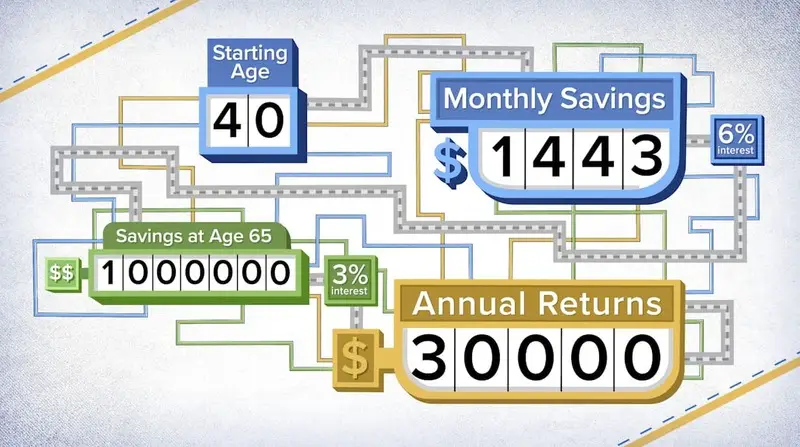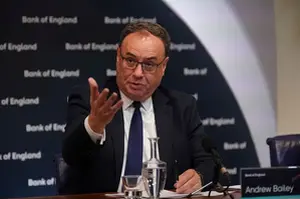
Investing isn't free. But here's why 20% of investors think it is
Death and taxes are, as Benjamin Franklin famously declared, two of life's certainties.
Investment fees may be a worthy addition to that list in the modern era — though not all investors are aware of this near-universal fact.
The fees financial services firms charge can be murky.
One-fifth of consumers think their investment services are free of cost, according to a recent Hearts & Wallets survey of about 6,000 U.S. households. Another 36% reported not knowing their fees.
A separate poll conducted by the Financial Industry Regulatory Authority Investor Education Foundation similarly found that 21% of people believe they don't pay any fees to invest in non-retirement accounts. That share is up from 14% in 2018, the last time FINRA issued the survey.
More from Personal Finance:
Prioritizing retirement, emergency savings in shaky economy
Bank crisis causing recession may depend on 'wealth effect'
The IRS plans to tax some NFTs as collectibles
The broad ecosystem of financial services companies doesn't work for free. These firms — whether an investment fund or financial advisor, for example — generally levy investment fees of some kind.
Those fees may largely be invisible to the average person. Firms disclose their fees in fine print but generally don't ask customers to write a check or debit money from their checking accounts each month, as non-financial firms might do for a subscription or utility payment.
Instead, they withdraw money behind the scenes from a customer's investment assets — charges that can easily go unnoticed.
"It's relatively frictionless," said Christine Benz, director of personal finance at Morningstar. "We're not conducting a transaction to pay for those services."

"And that makes you much less sensitive to the fees you're paying — in amount and whether you're paying fees at all."
Small fees can add up to thousands over time
Investment fees are often expressed as a percentage of investors' assets, deducted annually.
Investors paid an average 0.40% fee for mutual and exchange-traded funds in 2021, according to Morningstar. This fee is also known as an "expense ratio."
That means the average investor with $10,000 would have had $40 withdrawn from their account last year. That dollar fee would rise or fall each year according to the investment balance.
The percentage and dollar amount may seem innocuous, but even small variations in fees can add up significantly over time due to the power of compounding. In other words, in paying higher fees an investor loses not only that extra money but the growth it could have seen over decades.
It's relatively frictionless. We're not conducting a transaction to pay for those services.Christine Benzdirector of personal finance at Morningstar
The bulk — 96% — of investors who responded to FINRA's survey noted their main motivation for investing is to make money over the long term.
The Securities and Exchange Commission has an example to demonstrate the long-term dollar impact of fees. The example assumes a $100,000 initial investment earning 4% a year for 20 years. An investor who pays a 0.25% annual fee versus one paying 1% a year would have roughly $30,000 more after two decades: $208,000 versus $179,000.
That dollar sum might well represent about a year's worth of portfolio withdrawals in retirement, give or take, for someone with a $1 million portfolio.
In all, a fund with high costs "must perform better than a low-cost fund to generate the same returns for you," the SEC said.
Fees can affect moves such as 401(k) rollovers
Fees can have a big financial impact on common decisions such as rolling over money from a 401(k) plan into an individual retirement account.
Rollovers — which might occur after retirement or a job change, for example — play a "particularly important" role in opening traditional, or pretax, IRAs, according to the Investment Company Institute.
Seventy-six percent of new traditional IRAs were opened only with rollover dollars in 2018, according to ICI, an association representing regulated funds, including mutual funds, exchange-traded funds and closed-end funds.
About 37 million — or 28% — of U.S. households own traditional IRAs, holding a collective $11.8 trillion at the end of 2021, according to ICI.
But IRA investments typically carry higher fees than those in 401(k) plans. As a result, investors would lose $45.5 billion in aggregate savings to fees over 25 years, based only on rollovers conducted in 2018, according to an analysis by The Pew Charitable Trusts, a nonpartisan research organization.
Fees have fallen over time
This annual fee structure isn't necessarily the case for all investors.
For example, some financial planners have shifted to a flat-dollar fee, whether an ongoing subscription-type fee or a one-time fee for a consultation.
And some fee models are different. Investors who buy single stocks or bonds may pay a one-time upfront commission instead of an annual fee. A rare handful of investment funds may charge nothing at all; in these cases, firms are likely trying to attract customers to then cross-sell them other products that do carry a fee, said Benz of Morningstar.
Here's the good news for many investors: Even if you haven't been paying attention to fees, they've likely declined over time.
Fees for the average fund investor have fallen by half since 2001, to 0.40% from 0.87%, according to Morningstar. This is largely due to investors' preferences for low-cost funds, particularly so-called index funds, Morningstar said.
Index funds are passively managed; instead of deploying stock- or bond-picking strategies, they seek to replicate the performance of a broad market index such as the S&P 500 Index, a barometer of U.S. stock performance. They're typically less expensive than actively managed funds.
Investors paid an average 0.60% for active funds and 0.12% for index funds in 2021, according to Morningstar.
Benz recommends 0.50% as a "good upper threshold for fees." It may make sense to pay more for a specialized fund or a small fund that must charge more each year due to smaller economies of scale, Benz said.
A higher fee — say, 1% — may also be reasonable for a financial advisor, depending on the services they provide, Benz said. For 1%, which is a common fee among financial advisors, customers should expect to get services beyond investment management, such as tax management and broader financial planning.
"The good news is most advisors are indeed bundling those services together," she said.
Source: https://www.cnbc.com/2023/03/25/investors-pay-fees-but-may-not-know.html






